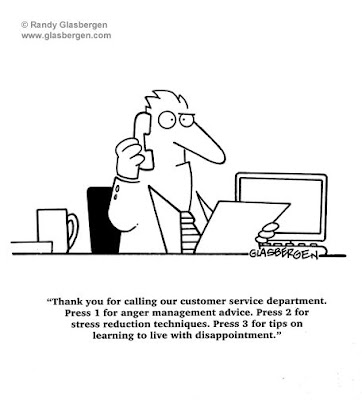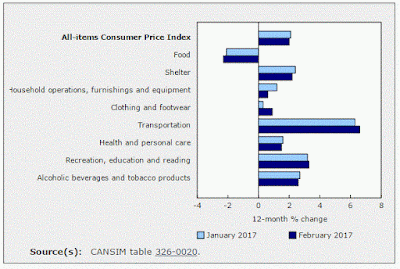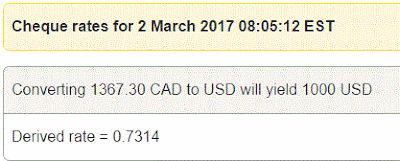More "Hard" Data Suggests That Confident US Consumers Are Not Spending
And this is important because it will directly impact 2017 Q1 US GDP. This mornings data (from the US Department of Commerce) showed that "real" (after inflation) consumer spending (for February) continues to remain muted (after an acceleration in late 2016). The white line represents the fairly volatile monthly data, but the smoother 12 month moving average data show the trend and since 2014, that trend has been toward lower spending growth. We must also remember that in the US, the consumer is responsible for about 2/3 of the US economy (that is significant).
On the inflation front, the US federal Reserve's target PCE (Personal Consumption Expenditure) Core Price Index moved a little higher:
This justifies their stance of interest rate increases which are even more likely to happen twice more this year.
Interest rates rising and economic growth (although expected to increase) is not.
For us this is a "yellow" flag.
Further, President Trump is scheduled to meet with China's leader Xi Jingpin nest week.
He "tweeted" this message yesterday (in case you all missed it):
Protectionism and protectionist policies are one of our key concerns for 2017: protectionist policies, if they escalate a trade war, just do not work (economic history). It will not help to grow the US economy, it may even be detrimental (no one wins in a trade war).
Another warning flag for us.
For our (High Rock) clients (and ourselves, because we invest in the exact same models and assets as our clients), these warning signs plus high equity market valuations (see our weekly webinar for more on valuations: http://highrockcapital.ca/current-edition-of-the-weekly-webinar.html ) continue to tell us that the US equity market is vulnerable to disappointment.
When risk is high in one asset class, we prefer to look for value in others and so with continued deep research, we do just that, preferring to err on the side of caution and disciplined investing.


































